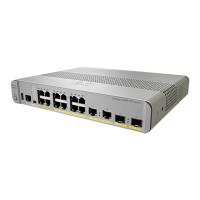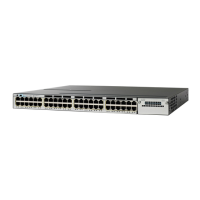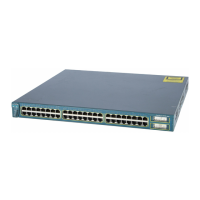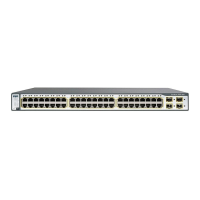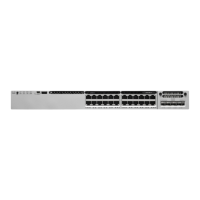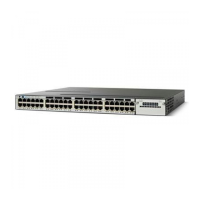3-11
Catalyst 3560 Switch Hardware Installation Guide
78-16057-01
Chapter 3 Switch Installation
Preparing for Installation
Verifying Switch Operation
Before installing the switch in a rack, on a wall, or on a table or shelf, you should
power the switch and verify that the switch passes POST. These sections describe
the steps required to connect a PC to the switch console port, to power on the
switch, and to observe POST:
• Connecting a PC or Terminal to the Console Port, page 3-11
• Powering On the Switch and Running POST, page 3-12
Connecting a PC or Terminal to the Console Port
To connect a PC to the console port, use the supplied RJ-45-to-DB-9 adapter
cable. To connect the switch console port to a terminal, you need to provide a
RJ-45-to-DB-25 female DTE adapter. You can order a kit (part number
ACS-DSBUASYN=) containing that adapter from Cisco. For console port and
adapter pinout information, see the “Cable and Adapter Specifications” section on
page B-5.
The PC or terminal must support VT100 terminal emulation. The
terminal-emulation software—frequently a PC application such as Hyperterminal
or Procomm Plus—makes communication between the switch and your PC or
terminal possible.
Follow these steps to connect the PC or terminal to the switch:
Step 1 Configure the baud rate and character format of the PC or terminal to match these
console port default characteristics:
• 9600 baud
• 8 data bits
• 1 stop bit
• No parity
• None (flow control)
After you have gained access to the switch, you can change the console baud rate
through the Administration > Console Baud Rate window in the Cluster
Management Suite (CMS).
